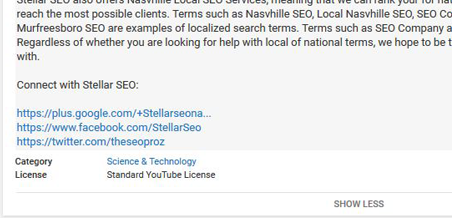Achieve Better Map Rankings with these Essentials

Today, with nearly every business looking to have an online presence, it is important to have an edge over your competitors.
Even though the "map" rankings have been shown time after time to drive business and revenue to local businesses, there are still a ton of small businesses that have neglected the basics of establishing a strong online presence. If you are one of the guilty, here are your next seven steps for fixing your digital listing.
1. Setting Up Your GMB Listing
The first step of Google My Business (GMB) listing optimization is to lay the foundation for a successful listing. Ensure that the business is listed on Google in the first place. The business name should be the legal business name and should not include keywords. The address and contact info on GMB should match the one on your website. Choose the right category and fill in your business hours. Proper setup is an important part of GMB listing optimization, and it lays the groundwork for optimum results and a possible appearance in the coveted Google 3-pack.
2. Citations
Citations are how your business name, contact info and address appear throughout the Web in places such as search directories. Having more citations than your competition used to be the answer to higher rankings but recent updates have increased the importance of inbound links, reducing the impact of citations. That said, citations are still a great source of links for your site and can be used as tiered links or for anchor text diversification.
Most businesses will have citations on the core directories like Yelp, Superpages, Angieslist and YP. Beyond the basics, you can also find numerous niche and location specific directories to list your business on as well. Bright Local has put together a tremendous location-based citation and niche citation list, check them both out for a ton of opportunities.
3. Inbound Links
Link building is now every bit as important for local SEO as it is for organic listings. In the past we have shared several link building ideas, here are a few to get you started though:
- 20 Effective Link Building Strategies
- Where to Get Your First 44 Backlinks
- Link Building Without Producing Massive Amounts of Content
A quick search of Website Magazine for link building will yield additional strategies for your consideration.
4. Google Properties
Google has many services and interlinking your profiles will give you a better chance of getting in the Google 3-pack. Link your website to Google products such as YouTube, Google Plus, Picasa and Blogger. When setting up your social media presence, set up and engage on Google's social media development partners like Meetup, Delicious, Reddit, among others too. Doing this will boost your profile on Google, which means better rankings.

6. Geo-Tagging Pictures
When optimizing a GMB listing, how you take your images also counts. Every business will obviously add pictures; the question is how do you gain an advantage in this area? The answer is using pictures that you took with your mobile device. That's right, take your mobile phone, turn on your location settings and take the pictures. The location's longitude and latitude will be embedded in every image. Use these pictures on your website and GMB profile to boost your listing. If you have pre-existing photos you can also add geo-data to them.
7. Ask for Reviews
About 88 percent of consumers look at online reviews as they do personal recommendations, while up to 89 percent of consumers will use the search engines to make purchase decisions and have done so for many years. Successful GMB optimization comes with setting up a strategy that will allow you to capture reviews from your satisfied consumers. If you aren't sure were to start, a simple email to your past customers asking for a review can be effective. Whitespark has also created a free tool that allows you to make a form explaining to your customers how to leave a Google review.









